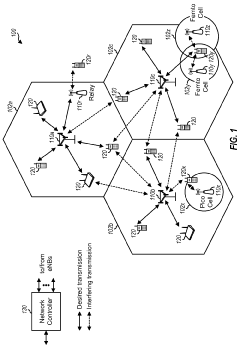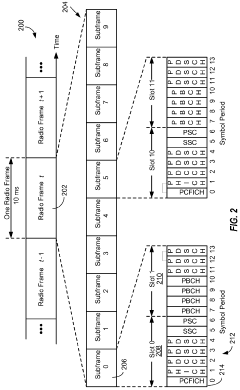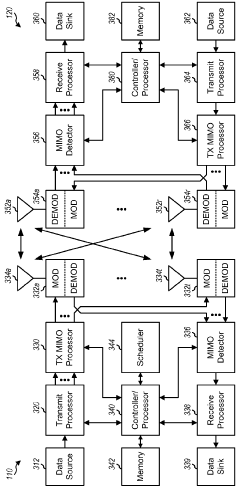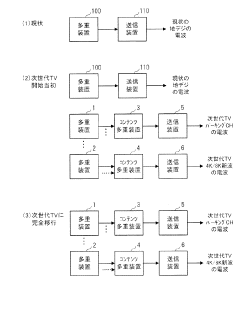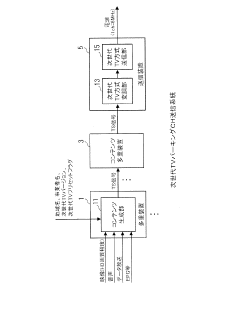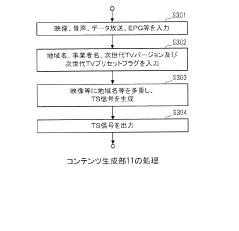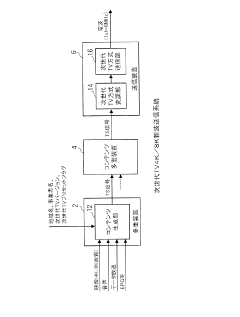Multiplexer Techniques Transforming Broadcast Technology
JUL 13, 20259 MIN READ
Generate Your Research Report Instantly with AI Agent
Patsnap Eureka helps you evaluate technical feasibility & market potential.
Multiplexer Evolution
The evolution of multiplexer techniques in broadcast technology has been a transformative journey, marked by significant milestones and technological advancements. Initially, multiplexing was introduced to efficiently utilize bandwidth and transmit multiple signals over a single channel. This concept revolutionized broadcasting by allowing for the simultaneous transmission of multiple programs or data streams.
In the early stages, frequency-division multiplexing (FDM) was the primary technique used in broadcasting. FDM allowed different signals to be transmitted on separate frequency bands within a single channel. This method, while effective, had limitations in terms of channel capacity and signal quality.
The advent of time-division multiplexing (TDM) marked a significant leap forward. TDM allowed multiple signals to share the same frequency band by allocating time slots to each signal. This technique greatly improved channel efficiency and became the backbone of digital broadcasting systems.
As digital technology advanced, more sophisticated multiplexing techniques emerged. The introduction of statistical multiplexing in the 1990s was a game-changer. This technique dynamically allocated bandwidth based on the complexity of the content being transmitted, optimizing channel usage and improving overall picture quality.
The transition to digital television broadcasting brought about the development of advanced multiplexing standards. The MPEG-2 Transport Stream became a widely adopted standard, allowing for the efficient packaging and transmission of audio, video, and data services within a single bitstream.
With the rise of high-definition and ultra-high-definition content, multiplexing techniques have continued to evolve. The introduction of H.264/AVC and HEVC (H.265) codecs has enabled more efficient compression, allowing broadcasters to multiplex an increasing number of high-quality channels within the same bandwidth.
Recent developments in multiplexing have focused on adaptive bitrate streaming and object-based broadcasting. These techniques allow for more flexible and personalized content delivery, adapting to varying network conditions and viewer preferences.
The ongoing evolution of 5G technology is set to further transform multiplexing in broadcasting. 5G networks promise enhanced mobile broadband capabilities, potentially revolutionizing the way broadcast content is delivered and consumed, with implications for both traditional and over-the-top (OTT) broadcasting services.
As we look to the future, the evolution of multiplexer techniques continues to be driven by the demand for higher quality content, increased channel capacity, and more efficient spectrum utilization. Emerging technologies such as artificial intelligence and machine learning are expected to play a significant role in further optimizing multiplexing processes, paving the way for even more innovative broadcasting solutions.
In the early stages, frequency-division multiplexing (FDM) was the primary technique used in broadcasting. FDM allowed different signals to be transmitted on separate frequency bands within a single channel. This method, while effective, had limitations in terms of channel capacity and signal quality.
The advent of time-division multiplexing (TDM) marked a significant leap forward. TDM allowed multiple signals to share the same frequency band by allocating time slots to each signal. This technique greatly improved channel efficiency and became the backbone of digital broadcasting systems.
As digital technology advanced, more sophisticated multiplexing techniques emerged. The introduction of statistical multiplexing in the 1990s was a game-changer. This technique dynamically allocated bandwidth based on the complexity of the content being transmitted, optimizing channel usage and improving overall picture quality.
The transition to digital television broadcasting brought about the development of advanced multiplexing standards. The MPEG-2 Transport Stream became a widely adopted standard, allowing for the efficient packaging and transmission of audio, video, and data services within a single bitstream.
With the rise of high-definition and ultra-high-definition content, multiplexing techniques have continued to evolve. The introduction of H.264/AVC and HEVC (H.265) codecs has enabled more efficient compression, allowing broadcasters to multiplex an increasing number of high-quality channels within the same bandwidth.
Recent developments in multiplexing have focused on adaptive bitrate streaming and object-based broadcasting. These techniques allow for more flexible and personalized content delivery, adapting to varying network conditions and viewer preferences.
The ongoing evolution of 5G technology is set to further transform multiplexing in broadcasting. 5G networks promise enhanced mobile broadband capabilities, potentially revolutionizing the way broadcast content is delivered and consumed, with implications for both traditional and over-the-top (OTT) broadcasting services.
As we look to the future, the evolution of multiplexer techniques continues to be driven by the demand for higher quality content, increased channel capacity, and more efficient spectrum utilization. Emerging technologies such as artificial intelligence and machine learning are expected to play a significant role in further optimizing multiplexing processes, paving the way for even more innovative broadcasting solutions.
Broadcast Market Trends
The broadcast market is undergoing significant transformation driven by technological advancements, changing consumer behaviors, and evolving regulatory landscapes. The global broadcast industry continues to grow, with projections indicating a steady increase in market value over the coming years. This growth is primarily fueled by the rising demand for high-quality content, the proliferation of digital platforms, and the increasing adoption of advanced broadcasting technologies.
One of the most notable trends in the broadcast market is the shift towards digital and over-the-top (OTT) platforms. Traditional linear TV broadcasting is gradually losing ground to streaming services and video-on-demand platforms. This transition is reshaping the entire broadcast ecosystem, from content creation to distribution and consumption. Broadcasters are increasingly investing in digital infrastructure and developing their own streaming platforms to remain competitive in this evolving landscape.
The demand for high-definition (HD) and ultra-high-definition (UHD) content is another significant trend driving the broadcast market. Consumers are increasingly expecting superior video quality, which is pushing broadcasters to upgrade their equipment and transmission technologies. This trend is closely linked to the growing adoption of 4K and 8K televisions, creating a ripple effect throughout the broadcast value chain.
Live sports and events continue to be a major driver of broadcast market growth. Despite the rise of on-demand viewing, live content remains a key differentiator for broadcasters. This has led to increased competition for sports rights and investments in technologies that enhance the live viewing experience, such as augmented reality (AR) and virtual reality (VR) applications.
The integration of artificial intelligence (AI) and machine learning (ML) in broadcasting is another emerging trend. These technologies are being leveraged for content recommendation, automated content creation, and predictive analytics. AI-powered solutions are helping broadcasters optimize their operations, personalize content delivery, and improve overall viewer engagement.
Mobile broadcasting is gaining traction, driven by the widespread adoption of smartphones and tablets. Broadcasters are developing mobile-first strategies and optimizing their content for smaller screens. This trend is particularly pronounced in emerging markets, where mobile devices are often the primary means of accessing broadcast content.
The regulatory environment is also shaping the broadcast market trends. Governments worldwide are implementing policies to promote digital broadcasting, manage spectrum allocation, and address issues related to content regulation and data privacy. These regulatory changes are influencing broadcasters' strategies and investments in technology and infrastructure.
In conclusion, the broadcast market is in a state of flux, with traditional models being challenged by digital disruption. However, this transformation also presents opportunities for innovation and growth. Broadcasters who can adapt to these trends and leverage new technologies are likely to thrive in this evolving landscape.
One of the most notable trends in the broadcast market is the shift towards digital and over-the-top (OTT) platforms. Traditional linear TV broadcasting is gradually losing ground to streaming services and video-on-demand platforms. This transition is reshaping the entire broadcast ecosystem, from content creation to distribution and consumption. Broadcasters are increasingly investing in digital infrastructure and developing their own streaming platforms to remain competitive in this evolving landscape.
The demand for high-definition (HD) and ultra-high-definition (UHD) content is another significant trend driving the broadcast market. Consumers are increasingly expecting superior video quality, which is pushing broadcasters to upgrade their equipment and transmission technologies. This trend is closely linked to the growing adoption of 4K and 8K televisions, creating a ripple effect throughout the broadcast value chain.
Live sports and events continue to be a major driver of broadcast market growth. Despite the rise of on-demand viewing, live content remains a key differentiator for broadcasters. This has led to increased competition for sports rights and investments in technologies that enhance the live viewing experience, such as augmented reality (AR) and virtual reality (VR) applications.
The integration of artificial intelligence (AI) and machine learning (ML) in broadcasting is another emerging trend. These technologies are being leveraged for content recommendation, automated content creation, and predictive analytics. AI-powered solutions are helping broadcasters optimize their operations, personalize content delivery, and improve overall viewer engagement.
Mobile broadcasting is gaining traction, driven by the widespread adoption of smartphones and tablets. Broadcasters are developing mobile-first strategies and optimizing their content for smaller screens. This trend is particularly pronounced in emerging markets, where mobile devices are often the primary means of accessing broadcast content.
The regulatory environment is also shaping the broadcast market trends. Governments worldwide are implementing policies to promote digital broadcasting, manage spectrum allocation, and address issues related to content regulation and data privacy. These regulatory changes are influencing broadcasters' strategies and investments in technology and infrastructure.
In conclusion, the broadcast market is in a state of flux, with traditional models being challenged by digital disruption. However, this transformation also presents opportunities for innovation and growth. Broadcasters who can adapt to these trends and leverage new technologies are likely to thrive in this evolving landscape.
Multiplexer Challenges
Multiplexer technology, while revolutionizing broadcast capabilities, faces several significant challenges that impede its full potential. One of the primary obstacles is the increasing demand for higher bandwidth and data rates. As content quality continues to improve, with 4K and 8K resolutions becoming more prevalent, multiplexers struggle to efficiently handle the massive data streams without compromising signal integrity or introducing latency.
Interoperability issues present another hurdle for multiplexer systems. The diverse range of broadcast standards and protocols across different regions and platforms creates compatibility challenges. Ensuring seamless integration between various components of the broadcast chain, from content creation to end-user reception, requires complex adaptations and standardization efforts.
Signal quality degradation remains a persistent concern in multiplexing. As more channels are compressed and combined, maintaining the original signal fidelity becomes increasingly difficult. This challenge is particularly acute in scenarios where bandwidth is limited, forcing broadcasters to make trade-offs between channel quantity and quality.
The dynamic nature of broadcast content adds another layer of complexity to multiplexer operations. Live events, breaking news, and variable bitrate content require adaptive multiplexing techniques that can respond in real-time to changing bandwidth requirements. Developing algorithms that can efficiently allocate resources on-the-fly without causing disruptions is a significant technical challenge.
Security and content protection pose critical challenges in the multiplexer ecosystem. As digital content becomes more vulnerable to piracy and unauthorized access, implementing robust encryption and digital rights management (DRM) systems within the multiplexing process becomes essential. However, these security measures often introduce additional processing overhead and complexity.
Energy efficiency is an emerging concern for multiplexer systems, especially in large-scale broadcast operations. The increasing computational demands of advanced multiplexing techniques contribute to higher power consumption and heat generation. Balancing performance with energy efficiency remains a significant challenge for hardware designers and system integrators.
Lastly, the transition to IP-based broadcasting introduces new challenges for multiplexer technology. While offering greater flexibility and scalability, IP infrastructures require multiplexers to adapt to packet-based transmission models, handle network jitter and packet loss, and ensure synchronization across distributed systems. This shift necessitates a fundamental rethinking of traditional multiplexing approaches and architectures.
Interoperability issues present another hurdle for multiplexer systems. The diverse range of broadcast standards and protocols across different regions and platforms creates compatibility challenges. Ensuring seamless integration between various components of the broadcast chain, from content creation to end-user reception, requires complex adaptations and standardization efforts.
Signal quality degradation remains a persistent concern in multiplexing. As more channels are compressed and combined, maintaining the original signal fidelity becomes increasingly difficult. This challenge is particularly acute in scenarios where bandwidth is limited, forcing broadcasters to make trade-offs between channel quantity and quality.
The dynamic nature of broadcast content adds another layer of complexity to multiplexer operations. Live events, breaking news, and variable bitrate content require adaptive multiplexing techniques that can respond in real-time to changing bandwidth requirements. Developing algorithms that can efficiently allocate resources on-the-fly without causing disruptions is a significant technical challenge.
Security and content protection pose critical challenges in the multiplexer ecosystem. As digital content becomes more vulnerable to piracy and unauthorized access, implementing robust encryption and digital rights management (DRM) systems within the multiplexing process becomes essential. However, these security measures often introduce additional processing overhead and complexity.
Energy efficiency is an emerging concern for multiplexer systems, especially in large-scale broadcast operations. The increasing computational demands of advanced multiplexing techniques contribute to higher power consumption and heat generation. Balancing performance with energy efficiency remains a significant challenge for hardware designers and system integrators.
Lastly, the transition to IP-based broadcasting introduces new challenges for multiplexer technology. While offering greater flexibility and scalability, IP infrastructures require multiplexers to adapt to packet-based transmission models, handle network jitter and packet loss, and ensure synchronization across distributed systems. This shift necessitates a fundamental rethinking of traditional multiplexing approaches and architectures.
Current Multiplexing
01 Time-division multiplexing techniques
Time-division multiplexing (TDM) is a method used in digital signal transmission where multiple data streams are combined into a single signal by allocating time slots to each stream. This technique allows for efficient use of bandwidth and is commonly used in telecommunications and networking applications.- Time-division multiplexing techniques: Time-division multiplexing (TDM) is a method used in digital signal transmission where multiple data streams are combined into a single signal by allocating time slots to each stream. This technique allows for efficient use of bandwidth and is commonly used in telecommunications and networking applications.
- Wavelength-division multiplexing in optical systems: Wavelength-division multiplexing (WDM) is a technique used in fiber-optic communication systems to transmit multiple signals over a single optical fiber by using different wavelengths of light. This method significantly increases the capacity of optical networks and allows for bidirectional communication over a single fiber.
- Multiplexer design for integrated circuits: Multiplexer designs for integrated circuits focus on optimizing performance, power consumption, and area efficiency. These designs often incorporate advanced techniques such as pass-transistor logic, transmission gates, and dynamic logic to achieve high-speed operation and low power dissipation in digital systems.
- Frequency-division multiplexing techniques: Frequency-division multiplexing (FDM) is a technique that divides the available bandwidth into multiple frequency bands, allowing multiple signals to be transmitted simultaneously. This method is widely used in radio and television broadcasting, as well as in cellular communication systems.
- Multiplexing in wireless communication systems: Multiplexing techniques in wireless communication systems enable multiple users or data streams to share the same radio frequency spectrum efficiently. These techniques include spatial multiplexing in MIMO systems, code-division multiple access (CDMA), and orthogonal frequency-division multiplexing (OFDM), which are crucial for achieving high data rates and spectral efficiency in modern wireless networks.
02 Wavelength-division multiplexing in optical systems
Wavelength-division multiplexing (WDM) is a technique used in fiber-optic communication systems to transmit multiple signals over a single optical fiber by using different wavelengths of light. This method significantly increases the capacity of optical networks and enables long-distance, high-bandwidth data transmission.Expand Specific Solutions03 Multiplexer design for integrated circuits
Multiplexer designs for integrated circuits focus on optimizing performance, power consumption, and area efficiency. These designs often incorporate advanced techniques such as pass-transistor logic, transmission gates, and dynamic logic to achieve high-speed operation and low power dissipation in digital systems.Expand Specific Solutions04 Frequency-division multiplexing techniques
Frequency-division multiplexing (FDM) is a technique that divides the available frequency spectrum into multiple channels, allowing simultaneous transmission of multiple signals. This method is widely used in radio and television broadcasting, as well as in wireless communication systems to efficiently utilize the available spectrum.Expand Specific Solutions05 Multiplexing in wireless communication systems
Multiplexing techniques in wireless communication systems enable multiple users or data streams to share the same radio frequency resources. These techniques include spatial multiplexing in MIMO systems, code-division multiple access (CDMA), and orthogonal frequency-division multiplexing (OFDM), which are crucial for improving spectral efficiency and capacity in modern wireless networks.Expand Specific Solutions
Key Industry Players
The multiplexer techniques transforming broadcast technology market is in a growth phase, driven by increasing demand for efficient spectrum utilization and enhanced broadcasting capabilities. The market size is expanding rapidly, with projections indicating substantial growth in the coming years. Technologically, the field is advancing quickly, with major players like QUALCOMM, Ericsson, and Huawei leading innovation. These companies, along with others like Samsung and ZTE, are developing sophisticated multiplexing solutions for next-generation broadcasting systems. The technology's maturity varies across different applications, with some areas like OFDM being well-established, while others like NOMA are still evolving. Overall, the competitive landscape is intense, with both established telecom giants and specialized broadcast technology firms vying for market share.
QUALCOMM, Inc.
Technical Solution: Qualcomm has pioneered the development of 5G Broadcast technology, which leverages multiplexer techniques to revolutionize content delivery. Their solution, based on the 3GPP Release 16 standard, enables efficient one-to-many content distribution over 5G networks[4]. Qualcomm's multiplexer system utilizes Time Division Multiplexing (TDM) and Frequency Division Multiplexing (FDM) techniques to optimize spectrum usage. The technology supports high-power high-tower (HPHT) deployments, allowing for wide-area coverage with a single transmitter[5]. Qualcomm has also integrated dynamic adaptive streaming capabilities, enabling seamless switching between broadcast and unicast modes based on network conditions and content popularity[6].
Strengths: Wide-area coverage, efficient spectrum utilization, and seamless integration with existing cellular networks. Weaknesses: Dependency on 5G infrastructure rollout and potential regulatory challenges in some regions.
Telefonaktiebolaget LM Ericsson
Technical Solution: Ericsson has developed a comprehensive multiplexer solution for next-generation broadcast technology, focusing on the convergence of broadcast and broadband networks. Their system employs a combination of Time Division Multiplexing (TDM) and Orthogonal Frequency Division Multiplexing (OFDM) techniques to maximize spectral efficiency[7]. Ericsson's multiplexer technology supports both linear TV and on-demand content delivery, enabling a hybrid broadcast-broadband model. The solution incorporates advanced error correction and modulation schemes, such as Low-Density Parity-Check (LDPC) codes and higher-order QAM, to improve signal robustness and increase data throughput[8]. Ericsson has also implemented a cloud-based multiplexer management system, allowing for dynamic resource allocation and real-time monitoring of network performance[9].
Strengths: Hybrid broadcast-broadband support, high spectral efficiency, and cloud-based management. Weaknesses: Potential interoperability issues with legacy systems and high initial investment costs.
Innovative Multiplexing
Spatial techniques for evolved multimedia broadcast multicast service enhancement
PatentWO2012116216A1
Innovation
- The implementation of spatial diversity techniques, including coordinated transmission using multiple antenna matrices, cyclical rotation of beam direction, cyclic delay diversity, and layered modulation, to enhance eMBMS signaling across multiple cells, ensuring uniform signal quality and coverage within an eMBMS area.
Multiplexer, transmission device, reception device, broadcasting system and chip
PatentActiveJP2016163273A
Innovation
- A multiplexing device and transmitter system that adds area name, business operator name, and version information to broadcast content, allowing receivers to prioritize higher-quality next-generation TV channels over terrestrial digital broadcasting, and automatically rescan channels when necessary.
Regulatory Framework
The regulatory framework surrounding multiplexer techniques in broadcast technology is a complex and evolving landscape. As these technologies continue to transform the industry, regulatory bodies worldwide are adapting their policies to ensure fair competition, efficient spectrum utilization, and consumer protection.
In many countries, the transition from analog to digital broadcasting has necessitated significant regulatory changes. Multiplexing, which allows multiple channels to be transmitted over a single frequency, has been a key enabler of this transition. Regulatory agencies have had to establish new guidelines for channel allocation, signal quality standards, and interference management in the context of multiplexed digital broadcasts.
The Federal Communications Commission (FCC) in the United States has been at the forefront of developing regulations for multiplexer technologies. They have implemented rules governing the use of multiplexing in both terrestrial and satellite broadcasting, including specifications for signal compression, modulation schemes, and error correction techniques. These regulations aim to maximize spectrum efficiency while maintaining broadcast quality and reliability.
In the European Union, the Body of European Regulators for Electronic Communications (BEREC) has worked to harmonize regulations across member states. Their framework addresses issues such as must-carry obligations for multiplexed channels, interoperability standards, and access to multiplexing infrastructure for smaller broadcasters.
Regulatory bodies are also grappling with the implications of advanced multiplexing techniques, such as statistical multiplexing, which dynamically allocates bandwidth based on content complexity. This technology poses challenges in terms of ensuring consistent quality of service and fair resource allocation among broadcasters sharing a multiplex.
Privacy and security concerns have emerged as critical regulatory issues in the era of digital multiplexing. Regulators are developing guidelines for protecting viewer data and preventing unauthorized access to multiplexed streams. This includes requirements for encryption standards and secure transmission protocols.
As over-the-top (OTT) services and internet protocol television (IPTV) gain prominence, regulators are reassessing how multiplexing regulations apply to these new delivery methods. The convergence of traditional broadcasting and internet-based services is blurring regulatory boundaries, prompting discussions on technology-neutral frameworks that can adapt to future innovations.
The international nature of satellite broadcasting has led to increased cooperation among national regulatory bodies. Organizations like the International Telecommunication Union (ITU) play a crucial role in coordinating global standards for multiplexing technologies and spectrum allocation, ensuring interoperability across borders.
In many countries, the transition from analog to digital broadcasting has necessitated significant regulatory changes. Multiplexing, which allows multiple channels to be transmitted over a single frequency, has been a key enabler of this transition. Regulatory agencies have had to establish new guidelines for channel allocation, signal quality standards, and interference management in the context of multiplexed digital broadcasts.
The Federal Communications Commission (FCC) in the United States has been at the forefront of developing regulations for multiplexer technologies. They have implemented rules governing the use of multiplexing in both terrestrial and satellite broadcasting, including specifications for signal compression, modulation schemes, and error correction techniques. These regulations aim to maximize spectrum efficiency while maintaining broadcast quality and reliability.
In the European Union, the Body of European Regulators for Electronic Communications (BEREC) has worked to harmonize regulations across member states. Their framework addresses issues such as must-carry obligations for multiplexed channels, interoperability standards, and access to multiplexing infrastructure for smaller broadcasters.
Regulatory bodies are also grappling with the implications of advanced multiplexing techniques, such as statistical multiplexing, which dynamically allocates bandwidth based on content complexity. This technology poses challenges in terms of ensuring consistent quality of service and fair resource allocation among broadcasters sharing a multiplex.
Privacy and security concerns have emerged as critical regulatory issues in the era of digital multiplexing. Regulators are developing guidelines for protecting viewer data and preventing unauthorized access to multiplexed streams. This includes requirements for encryption standards and secure transmission protocols.
As over-the-top (OTT) services and internet protocol television (IPTV) gain prominence, regulators are reassessing how multiplexing regulations apply to these new delivery methods. The convergence of traditional broadcasting and internet-based services is blurring regulatory boundaries, prompting discussions on technology-neutral frameworks that can adapt to future innovations.
The international nature of satellite broadcasting has led to increased cooperation among national regulatory bodies. Organizations like the International Telecommunication Union (ITU) play a crucial role in coordinating global standards for multiplexing technologies and spectrum allocation, ensuring interoperability across borders.
Energy Efficiency
Energy efficiency has become a critical consideration in the development of multiplexer techniques for broadcast technology. As the demand for high-quality, multi-channel broadcasting continues to grow, so does the need for more energy-efficient solutions. The broadcasting industry is increasingly focused on reducing power consumption while maintaining or improving signal quality and transmission capabilities.
One of the primary approaches to enhancing energy efficiency in multiplexer systems is through the optimization of signal processing algorithms. Advanced digital signal processing techniques are being employed to reduce the computational load on hardware components, thereby decreasing power consumption. These algorithms are designed to minimize redundant calculations and maximize the efficiency of data compression, resulting in lower energy requirements for signal processing and transmission.
Hardware innovations also play a crucial role in improving the energy efficiency of multiplexer systems. The development of low-power integrated circuits and more efficient amplifiers has led to significant reductions in power consumption. Additionally, the use of advanced semiconductor materials and manufacturing processes has enabled the creation of more energy-efficient components that generate less heat and require less cooling, further reducing overall energy consumption.
Another area of focus is the implementation of intelligent power management systems within multiplexer equipment. These systems can dynamically adjust power consumption based on real-time broadcasting needs, reducing energy waste during periods of lower demand. Adaptive power scaling techniques allow multiplexer systems to operate at optimal efficiency levels across various broadcasting scenarios.
The integration of renewable energy sources into broadcast infrastructure is also gaining traction as a means of improving overall energy efficiency. Solar panels and wind turbines are being utilized to power broadcasting facilities and multiplexer systems, reducing reliance on traditional power grids and lowering carbon footprints. This approach not only enhances energy efficiency but also contributes to the sustainability goals of broadcasting organizations.
Furthermore, the development of more efficient cooling systems for multiplexer equipment has become a priority. Advanced thermal management solutions, including liquid cooling and phase-change materials, are being implemented to dissipate heat more effectively, reducing the energy required for temperature control in broadcasting facilities.
As the broadcasting industry continues to evolve, the focus on energy efficiency in multiplexer techniques is expected to intensify. Future developments may include the integration of artificial intelligence and machine learning algorithms to further optimize power consumption and system performance. These advancements will not only reduce operational costs for broadcasters but also contribute to global efforts to minimize energy consumption and mitigate environmental impact.
One of the primary approaches to enhancing energy efficiency in multiplexer systems is through the optimization of signal processing algorithms. Advanced digital signal processing techniques are being employed to reduce the computational load on hardware components, thereby decreasing power consumption. These algorithms are designed to minimize redundant calculations and maximize the efficiency of data compression, resulting in lower energy requirements for signal processing and transmission.
Hardware innovations also play a crucial role in improving the energy efficiency of multiplexer systems. The development of low-power integrated circuits and more efficient amplifiers has led to significant reductions in power consumption. Additionally, the use of advanced semiconductor materials and manufacturing processes has enabled the creation of more energy-efficient components that generate less heat and require less cooling, further reducing overall energy consumption.
Another area of focus is the implementation of intelligent power management systems within multiplexer equipment. These systems can dynamically adjust power consumption based on real-time broadcasting needs, reducing energy waste during periods of lower demand. Adaptive power scaling techniques allow multiplexer systems to operate at optimal efficiency levels across various broadcasting scenarios.
The integration of renewable energy sources into broadcast infrastructure is also gaining traction as a means of improving overall energy efficiency. Solar panels and wind turbines are being utilized to power broadcasting facilities and multiplexer systems, reducing reliance on traditional power grids and lowering carbon footprints. This approach not only enhances energy efficiency but also contributes to the sustainability goals of broadcasting organizations.
Furthermore, the development of more efficient cooling systems for multiplexer equipment has become a priority. Advanced thermal management solutions, including liquid cooling and phase-change materials, are being implemented to dissipate heat more effectively, reducing the energy required for temperature control in broadcasting facilities.
As the broadcasting industry continues to evolve, the focus on energy efficiency in multiplexer techniques is expected to intensify. Future developments may include the integration of artificial intelligence and machine learning algorithms to further optimize power consumption and system performance. These advancements will not only reduce operational costs for broadcasters but also contribute to global efforts to minimize energy consumption and mitigate environmental impact.
Unlock deeper insights with Patsnap Eureka Quick Research — get a full tech report to explore trends and direct your research. Try now!
Generate Your Research Report Instantly with AI Agent
Supercharge your innovation with Patsnap Eureka AI Agent Platform!
